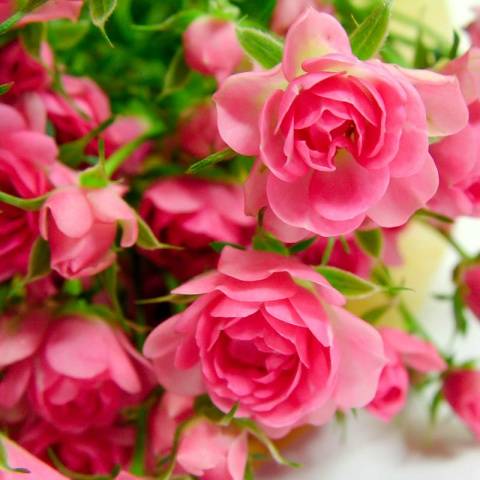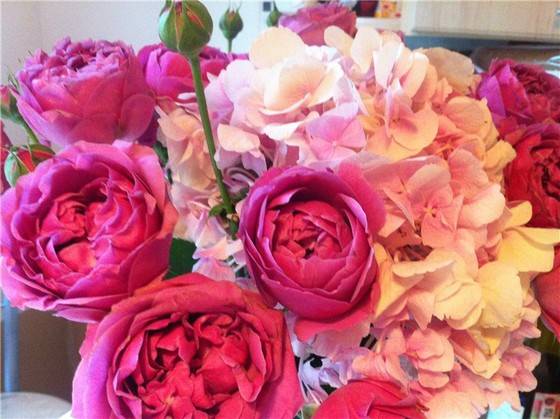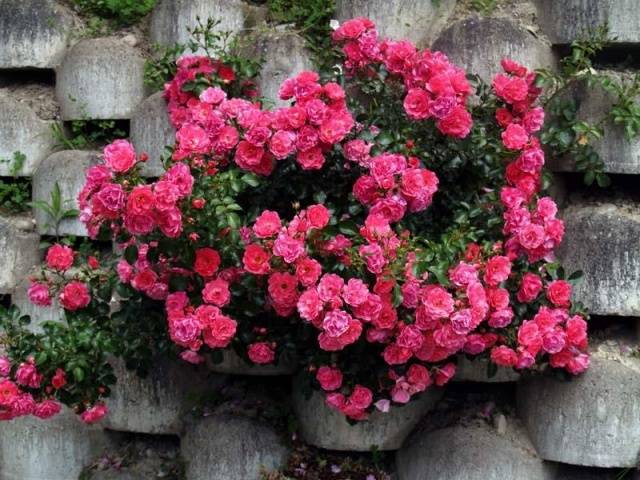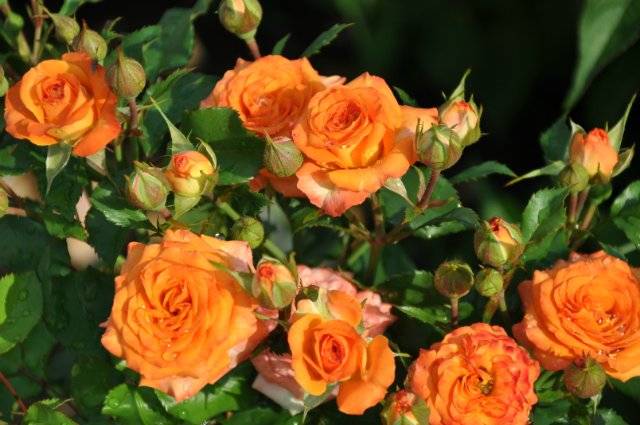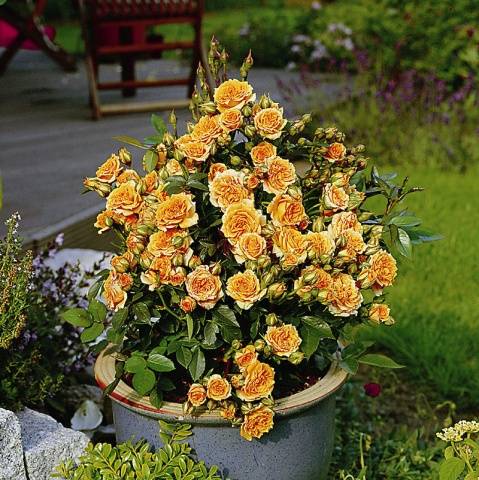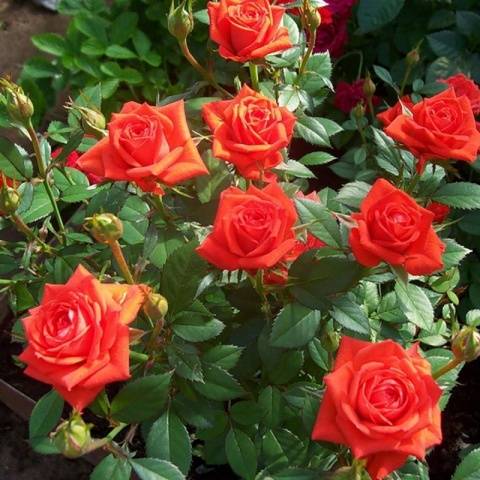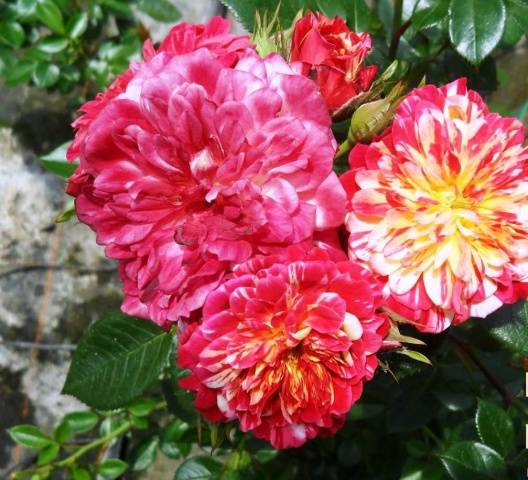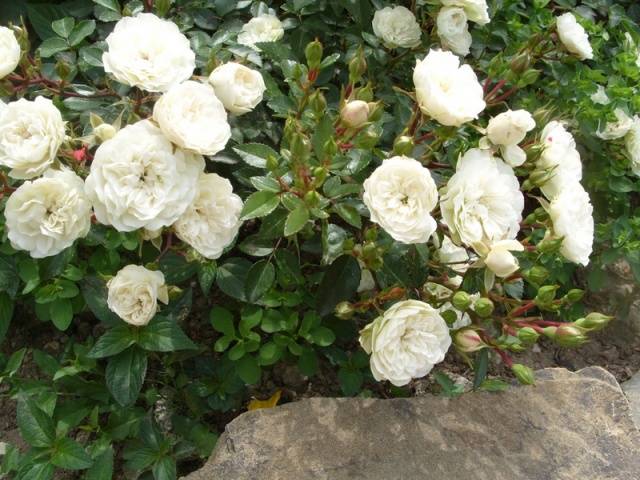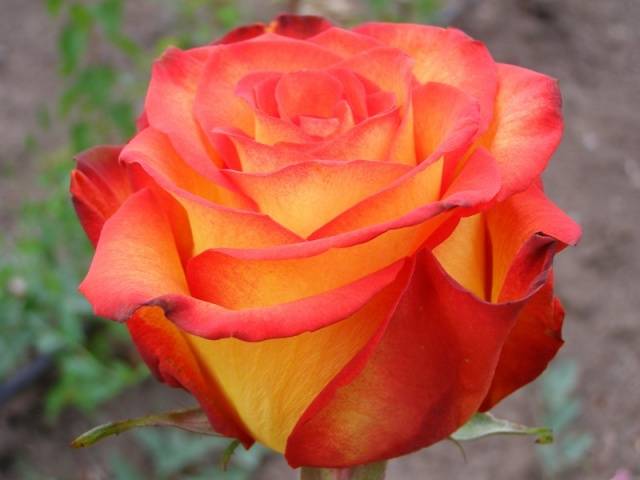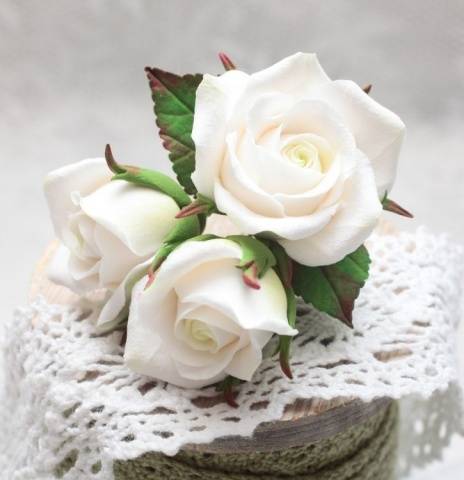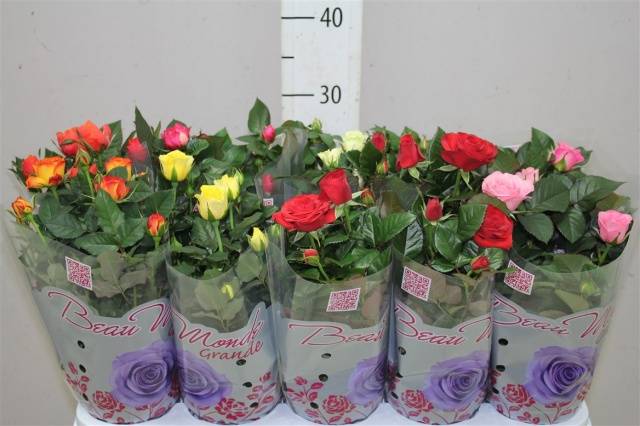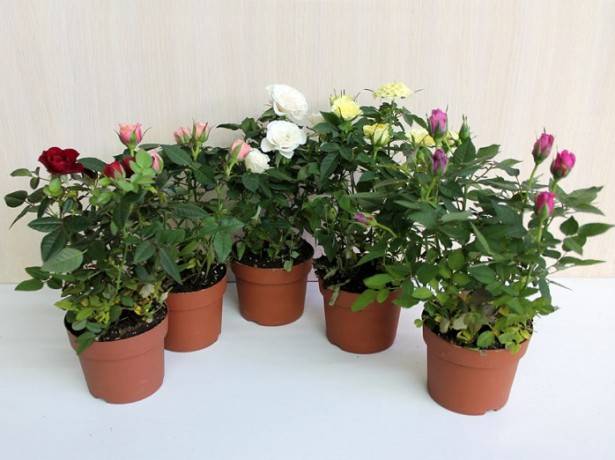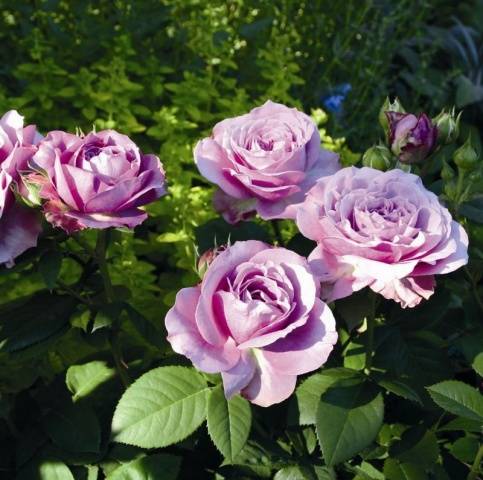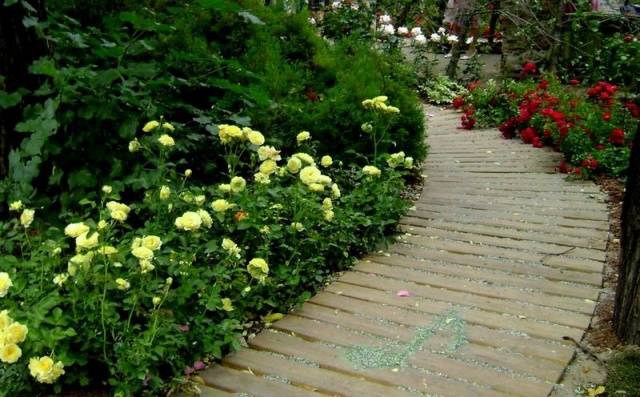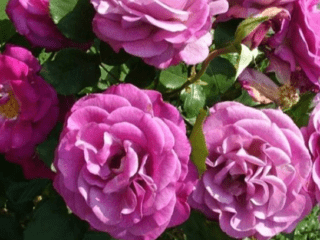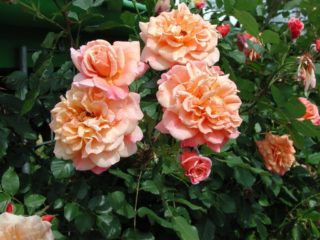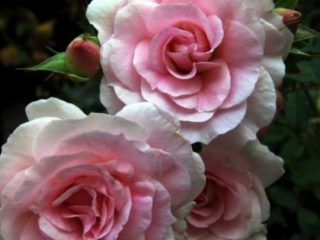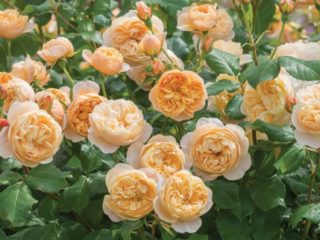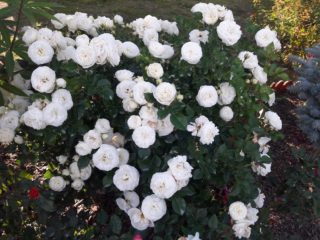Content
The beauty and luxury of a rose is difficult to overestimate - this flower has been called the queen of the garden for hundreds of years. But even more decorative and refined are the miniature roses brought to Europe at the end of the 19th century. China is considered the birthplace of dwarf flowers. Europeans did not immediately fall in love with miniature varieties, only in the early 1900s they began to be bred and planted in the gardens and parks of European capitals.
Since then, roses of dwarf varieties do not go out of fashion, they decorate courtyards and balconies, gardens and window sills, grown in pots and flower beds. About the varieties of these delicate plants, as well as about the rules for their cultivation - in this article.
Varieties of miniature roses
Flowers of dwarf varieties (they are also called patios), of course, are similar to their progenitors - ordinary tall roses, but they also have their own individual characteristics:
- the height of the bushes is usually 10-40 cm;
- leaves on the bushes are glossy, rich green;
- patio stems may be spiky or smooth;
- some varieties exude a strong spicy aroma, but most dwarf roses have practically no smell;
- among these flowers there are weaving varieties, creeping, bush, standard, trellis;
- inflorescences are small, their diameter is about 1-4 cm;
- the color of flowers can be very different (from standard red to unique green or purple shades);
- the shape of the inflorescences and petals may also differ, there are patio varieties with a fringed edge, there are also so-called terry inflorescences;
- if ordinary roses grow in height, then miniature varieties grow in breadth - the bushes of these flowers are very lush and dense;
- it is necessary to cut flowers before they have blossomed, this will significantly prolong the "life" of roses in vases;
- dwarf roses bloom seasonally: in spring, summer and autumn, that is, they will delight the owner from May until the first frost.
By crossing various varieties of dwarf roses and mixing them with ordinary tall plants, breeders have obtained many types of these miniature flowers - today there are more than five thousand varieties of dwarf roses.
All species differ in the height of the bush, the type of leaves, the shape and color of the buds - even the most fastidious esthete will definitely choose the right kind of patio for himself.
"Los Angeles"
The rose has a classic rich orange color, with flowers about 4 cm in diameter. The bushes of this variety grow up to 40 cm, abundantly strewn with buds. Abundant flowering gives the plant a special decorative effect - up to 80 buds can appear on each shoot at the same time.
Stems on the patio are straight, smooth, quickly stiffening. The leaves consist of 5-7 leaves, their shape is oval, the edges are carved, needle-like. In most cases, the foliage of the Los Angeles variety is dark green, but there are flowers with brown leaves or light green colored leaves with dark veins.
The color of the inflorescences is heterogeneous: at different stages of development, it changes from lemon yellow to coral and purple. This makes the bushes very elegant and colorful (as in the photo).
"Clementine"
Patio inflorescences of this variety are capable of changing their color from pastel pink to apricot. The diameter of the inflorescences is quite large - about 5 cm.The height of the miniature rose bushes can reach 50-60 cm.
Bushes are quite compact, powerful. When planting, leave at least 35 cm between them.The cultivar resists the most dangerous patio diseases: black spot and powdery mildew.
In cool climates, rosebuds do not bloom for a long time, they look quite decorative and elegant. In hot climates, roses fully bloom 4-5 days after the final bud formation. It turns out that the whole bush all season is constantly strewn with beautiful and large flowers of bright color.
In cut form, miniature roses of this variety also stand for a very long time - their freshness and decorativeness remain for about 9 days.
"Jewel"
The buds of this rose are in the shape of a pointed oval. The inside of the flower is lighter than the edges, the middle of this patio is yellow, while the whole flower is bright red. The petals are slightly bent outward, which makes the flower voluminous and lush. The inflorescence weakly burns out.
The center of the rose is high, there can be about 100 petals in one inflorescence, which makes it possible to classify the variety "Jewel" as a terry subspecies of miniature roses. The flowers exude a subtle sweet scent.
Young stems and leaves are cherry-colored and turn green as they grow. There are few thorns on the stems. Flowering throughout the season is moderate, but cut roses stand for a long time.
"Curlers"
The cultivar is named because of the flower petals, which are wrinkled in thin stripes and twisted outward. These roses are quite young - they were bred only in 2001 in France.
Bushes grow up to 45 cm, have dark green shiny leaves and fairly large flowers, about 5 cm in diameter.
The petals are colored red, have veins of a yellow-beige shade. Terry inflorescences, very lush, pleasantly smelling.
The bushes begin to bloom in June, flowering is repeated several times per season, the number of repetitions depends on the climate in the region and the feeding system. Flowering is long, the bush remains decorative and bright for a long time.
To some gardeners the variety "Curlers" seems too variegated, but children love it very much, these roses look spectacular in group plantings, in pots and on balconies (what a patio looks like, shown in the photo).
"Cinderella"
One of the earliest crossed miniature patio varieties. Bushes grow 20 cm to the sides and 30 cm in height, quite compact and decorative. The branches of this rose do not have thorns, so no one can get hurt by them.
The inflorescences are lush, painted in a snow-white color, but with the onset of autumn cold weather, the flowers can turn pink. The size of the flowers is small - about 3 cm in diameter, but up to 20 flowers can be collected in each inflorescence. These miniature roses have a pleasant spicy scent.
The bushes begin to bloom in early summer, retain their decorative appearance for a long time, and can bloom again. You can plant such roses in rockeries or on alpine slides, they are also good in containers or pots. Due to the absence of thorns, bouquets and boutonnieres are often collected from them.
"Hummingbird"
Another "ancient" variety of miniature roses, bred in the middle of the last century. The color of the petals of this rose is unique - it is a very rich shade of apricot orange.
The bushes are very small - their height rarely exceeds 25 cm. The leaves are dark green, leathery, glossy. Terry inflorescences, consist of 3-4 orange flowers. The variety has a very strong pleasant aroma.
Patios bloom from early summer to late autumn. In the south of Russia, the "Kolibri" bushes do not need to be covered, but on condition that the winter is snowy. Otherwise, as in the rest of the country, roses are covered more carefully, using special materials.
This miniature variety looks great as a frame for flower beds, rabatok, it can be grown in the house, on window sills or balconies. Mini-bouquets and boutonnieres are often made from small roses (as in the photo below).
How to grow miniature roses
You can grow such flowers both in the open field and in a protected place: in a room, on a loggia or in a greenhouse. Experienced gardeners note that growing a miniature rose is a little more difficult than an ordinary one - this flower is more picky and capricious.
But the result is worth it - flower beds, pots, discounts and alpine slides all season will delight the eye with abundant flowering of small bushes.
The requirements for miniature roses are as follows:
- it is better to plant them in poorly shaded areas - on the one hand, these flowers love warmth and sun, but, on the other hand, under the scorching rays, the buds will open too quickly - the owner will not have time to enjoy the beauty of his roses, as they have already faded.
- Land for miniature roses is needed with weak acidity and sufficient density, moisture in the soil must be retained for a long time. Light loams are most suitable.
- These flowers need to be fed several times per season. If this is not done, flowering will be poor and short-lived.
- Plants grafted onto rose hips will be taller (up to 40 cm) than those roses that grow on their own roots (10-25 cm). This must be taken into account when drawing up compositions on flower beds and in flower beds.
- Like ordinary roses, miniature species are afraid of severe frosts, so they will have to be covered for the winter.
The whole process of caring for miniature roses consists in watering, loosening the soil after each moistening and regularly removing faded inflorescences. In addition, you need to perform the following procedures:
- It is necessary to remove the shelter from the roses after the above-zero temperature is established on the street. At first, the bushes are simply ventilated by lifting the film from the leeward side. If the threat of severe frosts has passed, you can finally remove the insulation.
- In the spring, when the shelter is being removed, the roses need to be pruned. Do this until the kidneys begin to swell. The peculiarity of trimming miniature varieties is that the buds are very small, they are difficult to see. Gardeners recommend cutting off the entire bush, leaving shoots about 6-8 cm high.
- Frozen stems of roses can be reborn - they are simply cut off and young shoots are awaited. These bushes bloom in the same way as the rest, only their flowering period comes a week later.
- Conduct fertilizing of the bushes: with ammonium nitrate - after the winter shelter is removed; during the period of regrowth of shoots - with urea; when the first buds appear, it is necessary to apply a full range of mineral fertilizers; in the last days of summer, roses are fed with superphosphate and potassium nitrate.
- Of the diseases that threaten dwarf flowers, powdery mildew and black leaf spot are the most dangerous. They need to be fought with special means. But fungal diseases do not threaten miniature roses. But there are some pests that are dangerous for delicate flowers, for example, aphids or a rosy sawfly. To prevent the destruction of ornamental shrubs, it is better to spray them with insecticides in advance.
- Blooming of miniature roses in southern Russia can last up to six months, a short break is possible only on very hot days (in mid-July).
- Dwarf varieties are able to withstand a temperature drop of only up to -7 degrees, therefore, in cooler winters, the bushes must be covered. For this, in the southern regions, there are enough earthen mounds with a height of about 20 cm, and in the center and in the north you will have to build a real shelter. First, the roses are covered with dry foliage, then a metal frame is installed around the bushes and covered with agril, a plastic wrap is laid on top and pressed with stones or other heavy objects.
It is not difficult to grow miniature roses, but these decorative flowers will certainly become the "highlight" of the garden composition. Dwarf flowers can be grown not only in flower beds, they grow well in pots or containers.You can decorate both the garden and the room with such roses - in the house, miniature varieties can bloom all year round. But for this in the winter, the bushes must be supplemented.
How beautiful miniature roses are, you can understand from one photo of these unique flowers.
